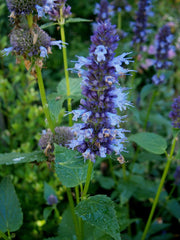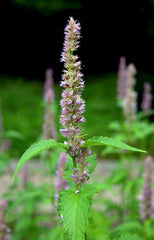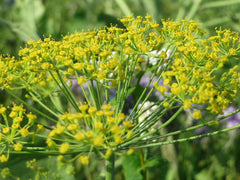Arctium lappa, Great Burdock - Large Rooted
A uniform and vigorous variety of this popular Japanese root vegetable. Burdock makes a big fleshy plant, with long slender black roots. Expect maturity 120-150 days from late spring sowing.
Burdock is cultivated for its edible root in Japan. Spring-sown seed produces edible roots in late summer and autumn, whilst autumn sown crops mature in the following spring or early summer.
Although the plants are quite large, it is best to grow them fairly close together (about 15cm apart, or in rows 30cm apart with the plants 5 - 8cm apart in the rows) since this encourages the development of long straight roots.
The seed head has little hooked prickles and these attach themselves to the hairs or clothing of passing creatures and can thus be carried for some considerable distance from the parent plant. The plants usually self-sow freely.
The flowers are very attractive to bees and butterflies.
Succeeds in most soils when grown in partial shade. Prefers a moist neutral to alkaline soil and a sunny position in a heavy soil. Plants are best grown in a light well-drained soil if the roots are required for culinary use.
Burdock is one of the foremost detoxifying herbs in both Chinese and Western herbal medicine.
Edible uses
Root - raw or cooked. Very young roots can be eaten raw, but older roots are normally cooked. They can be up to 120cm long and 2.5cm wide at the top, but are best harvested when no more than 60cm long. Old and very long roots are apt to become woody at the core. Although it does not have much flavour the root can absorb other flavours.
Young roots have a mild flavour, but this becomes stronger as the root gets older. The root is white but discolours rapidly when exposed to the air. Roots can be dried for later use. They contain about 2.5% protein, 0.14% fat, 14.5% carbohydrate, 1.17% ash. The root contains about 45% inulin. Inulin is a starch that cannot be digested by the human body, and thus passes straight through the digestive system. In some people this starch will cause fermentation in the gut, resulting in wind. Inulin can be converted into a sweetener that is suitable for diabetics to eat.
Young leaves - raw or cooked. A mucilaginous texture. The leaves contain about 3.5% protein, 1.8% fat, 19.4% carbohydrate, 8.8% ash.
Young stalks and branches - raw or cooked. Used like asparagus or spinach. They taste best if the rind is removed. The leaf stalks can be parboiled and used as a substitute for cardoons. The pith of the flowering stem can be eaten raw in salads, boiled or made into confections. A delicate vegetable, somewhat like asparagus in flavour.
The seeds can be sprouted and used like bean-sprouts.




![Photo By H. Zell (Own work) [GFDL (http://www.gnu.org/copyleft/fdl.html) or CC-BY-SA-3.0 (http://creativecommons.org/licenses/by-sa/3.0)], via Wikimedia Commons](http://www.openpollinated.co.uk/cdn/shop/products/1_a4b68bef-50e7-4a1b-b60b-7380669e3bc2_medium.jpeg?v=1510586905)


![By Evan-Amos (Own work) [Public domain], via Wikimedia Commons](http://www.openpollinated.co.uk/cdn/shop/products/CSA-Red-Spring-Onions_medium.jpg?v=1510586802)
![Photo By Phil Sellens from East Sussex [CC-BY-2.0 (http://creativecommons.org/licenses/by/2.0)], via Wikimedia Commons](http://www.openpollinated.co.uk/cdn/shop/products/1_328da1e0-3b6e-4642-8bcd-9374da7d4985_medium.jpeg?v=1510586879)
